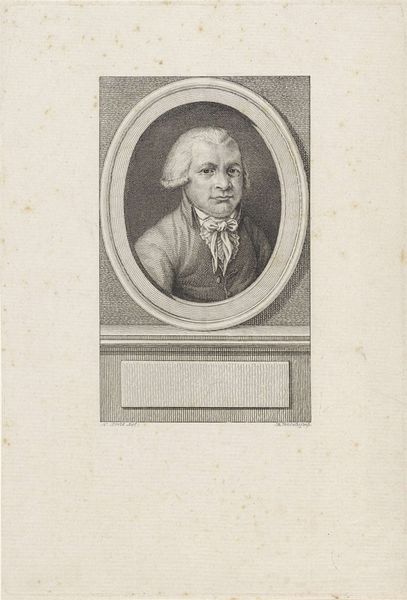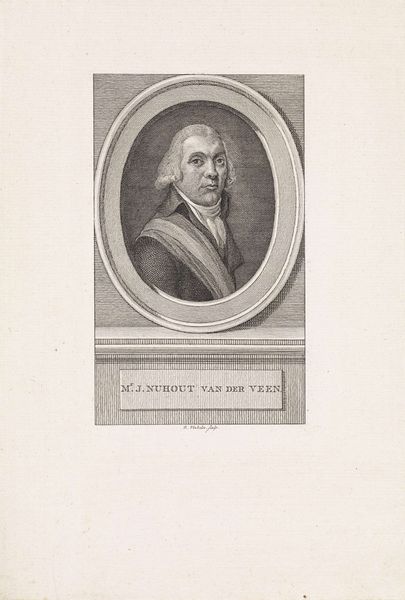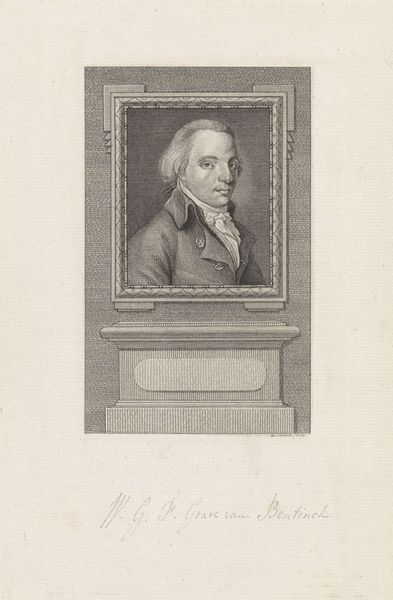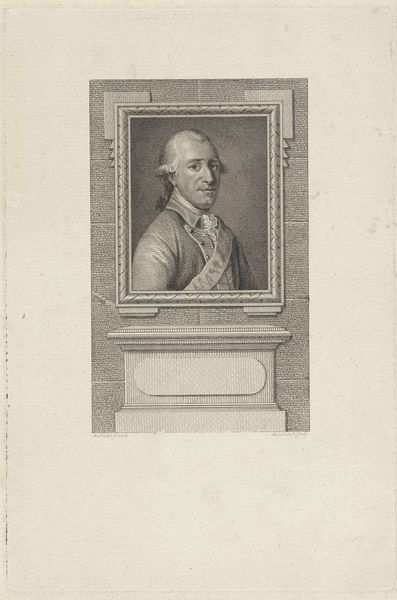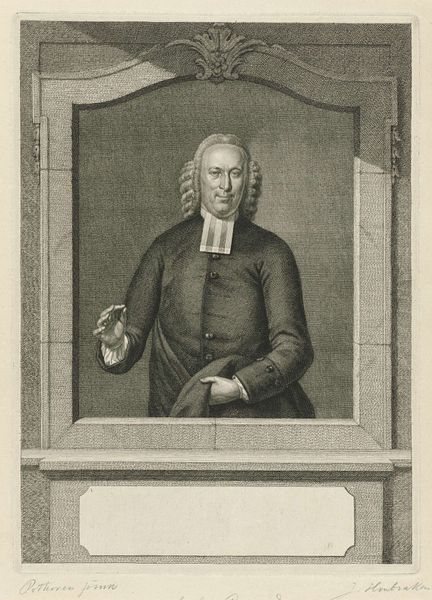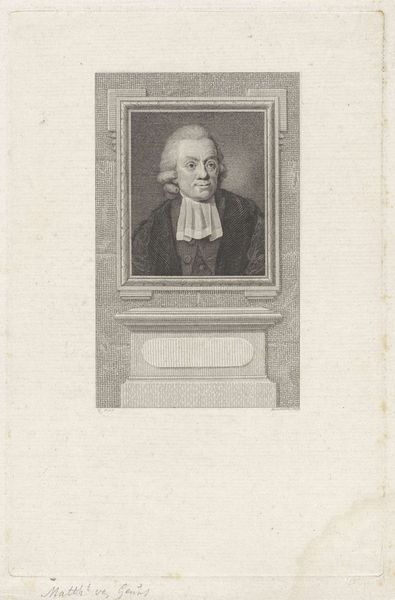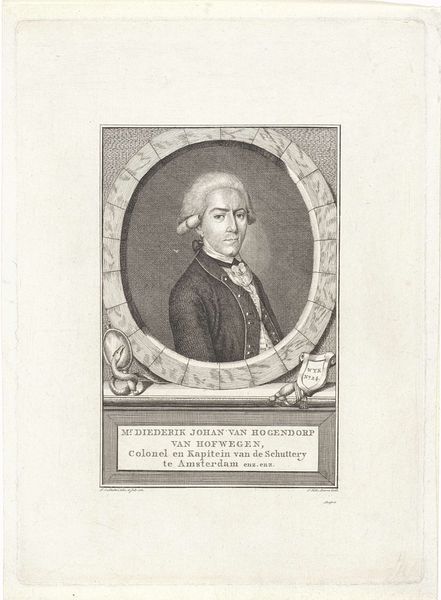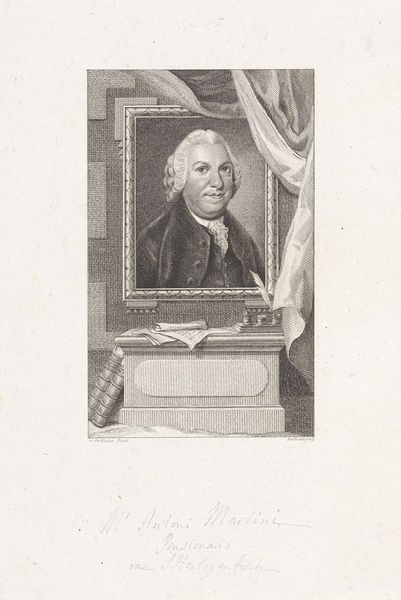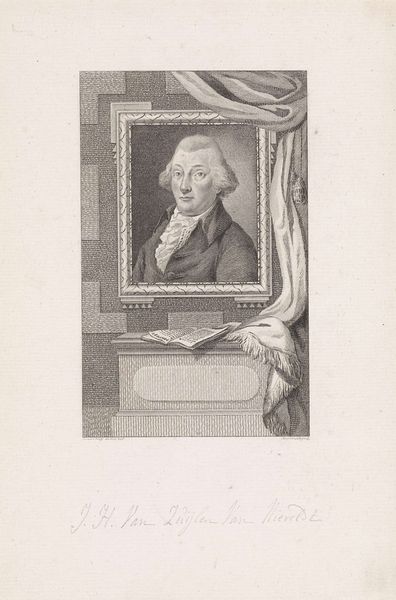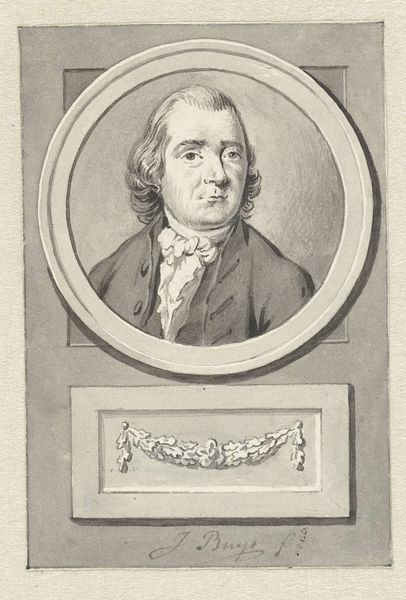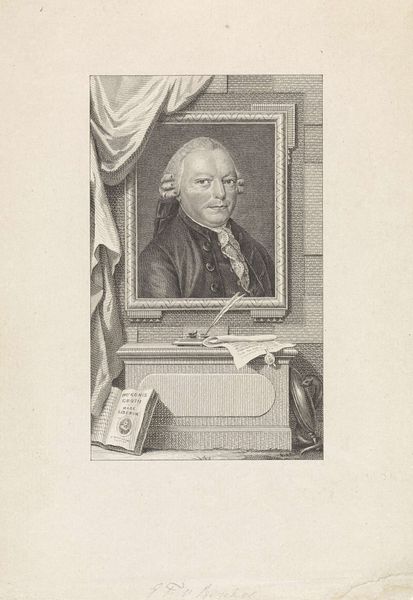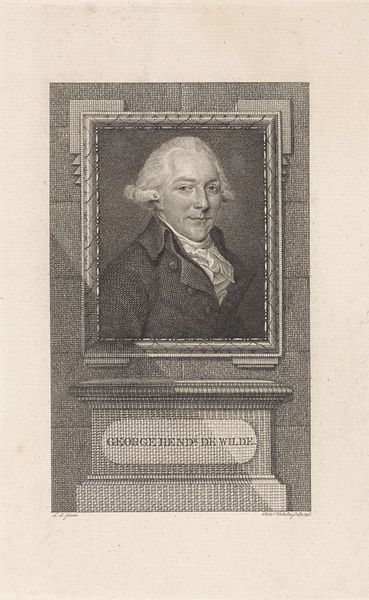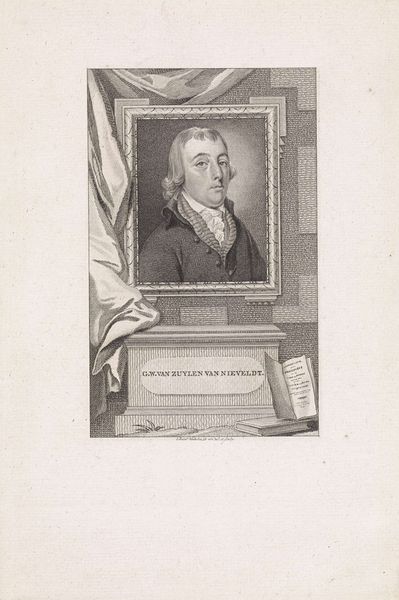
print, engraving
#
portrait
# print
#
academic-art
#
engraving
#
realism
Dimensions: height 239 mm, width 158 mm
Copyright: Rijks Museum: Open Domain
Editor: This is Reinier Vinkeles’ “Portret van Jacob George Jeronimo Hahn,” dating from 1786 to 1809. It’s an engraving, giving it this striking linear quality. It feels very formal, almost stiff. What stories do you think this portrait can tell us? Curator: Portraits are rarely just neutral depictions, especially those of the elite. Let’s consider the historical context: late 18th-early 19th century. What kind of social and political power dynamics were at play then? Hahn’s social status is important. How might the artist have used the visual language of portraiture to either reinforce or subtly challenge existing power structures? Think about the subtle choices made in depicting his clothing, his pose, and even his gaze. Do you think the sharp lines add to the realism, or detract? Editor: The lines almost give it a graphic feel, even though it’s very detailed. Is it meant to show authority through that rigidity? Curator: Perhaps. The use of engraving as a medium is also significant. How does the accessibility of printmaking potentially democratize portraiture, making it available to a wider audience, versus a unique oil painting only available to the sitter or his direct family? It is a multiple. How could Hahn use the circulation of prints to manage his image, and his reputation? Editor: So the print becomes almost like early political PR. Curator: Exactly. These objects are nodes within social networks. The choice to create this portrait as a print, then, speaks volumes. We might ask ourselves how art contributes to constructing identities, or how artistic practices respond to broader social changes. Editor: That makes me see it very differently now. It’s not just a face, but a calculated statement. Curator: Indeed. By engaging with its historical and social contexts, we unlock its potential to spark meaningful dialogue about power, representation, and identity. It forces us to ask not just who is represented but *why* and to *what end*.
Comments
No comments
Be the first to comment and join the conversation on the ultimate creative platform.
